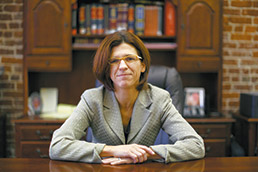(Washington, DC) – On Wednesday, the House of Representatives passed H.R. 3590, the Sportsmen’s Heritage and Recreational Enhancement (SHARE) Act, a bill to protect the traditional right of Americans to hunt and fish.
Rep. Bucshon (IN-08) released the following statement regarding the passage of H.R. 3590:
Â
“Today, we protected the 2nd Amendment rights of law-abiding citizens on federal lands and their use of traditional ammunition and tackle. We also reaffirmed the right of Hoosiers to use public lands for hunting, fishing, and shooting in compliance with existing laws by removing unnecessary federal roadblocks. These activities are important pastimes for many families, help educate young people about safety and responsibility, and contribute to our local economies. I’m happy the House passed H.R. 3095 to address many of the pressing concerns of Hoosier sportsmen and women and reinforce our nation’s commitment to our heritage.â€
Â
BACKGROUND:
H.R. 3590 is a bipartisan package of eight individual bills and will remove government roadblocks to hunting and fishing on certain public lands and guard against new regulations that threaten to block or limit access to these activities.
The bill (courtesy the Committee on Natural Resources):
Supports Access for Hunting and Fishing on Public Lands
- Reaffirms that fishing, hunting, and shooting are important and traditional activities that should continue on public lands.
- Requires federal land managers to support and facilitate use and access for hunting, fishing, and recreational shooting on Forest Service and Bureau of Land Management (BLM) land.
- Protects sportsmen from arbitrary efforts by the federal government to block public lands from hunting and fishing activities by implementing an “open until closed†management policy. However, it does not prioritize hunting and fishing over other multiple uses of public lands.
- Keeps Forest Service and BLM land open for hunting and fishing but allows the agencies to close sections when such closure is justified for reasons of national security, public safety, or to comply with federal and state laws or regulations. It does not require that hunting be allowed in National Parks nor does it create new exemptions to the Wilderness Act.
- Establishes a Wildlife and Hunting Heritage Conservation Council Advisory Committee.
- Allows sportsmen across the country to more easily obtain a federal duck stamp by making them available for purchase online.
Supports Recreational Shooting and Protects 2nd Amendment Rights
- Adjusts funding limitations to make more funds available to states, for a longer period of time, for the creation and maintenance of shooting ranges.
- Protects law-abiding individuals’ constitutional right to bear arms on lands owned by the Army Corps of Engineers. Congress has passed legislation allowing citizens to exercise this right on National Park and National Wild Service lands, but did not address lands owned by the Army Corps.
Protects the Use of Traditional Ammunition and Fish Tackle
- Although Congress long ago barred the EPA from banning certain types of ammunition, activist environmental groups are currently seeking an end run-around that law by petitioning the EPA to ban the use of lead in hunting and fishing components.
- A ban on lead bullets and tackle would increase costs for hunters, sports shooters, and fisherman; destroy jobs; and cause economic harm to the outdoor sportsmen and recreation industry.
- The bill protects the use of traditional ammunition and fishing tackle by reiterating and clarifying existing law to clearly limit EPA’s authority under the Toxic Substances Control Act (TSCA). It amends the TSCA to allow for the sale of traditional ammunition and fishing tackle that is subject to federal excise tax.
Eliminates Government Red Tape for the Importation of Specific, Legal Hunting Trophies


















 Attorney Stacy Uliana (IL Photo/ Aaron P. Bernstein)
Attorney Stacy Uliana (IL Photo/ Aaron P. Bernstein)